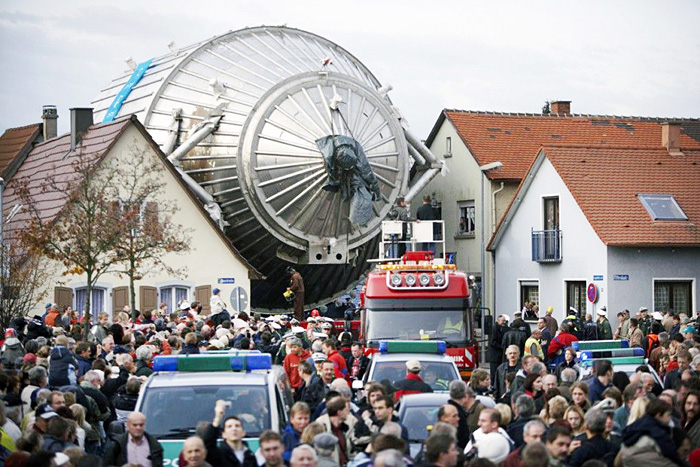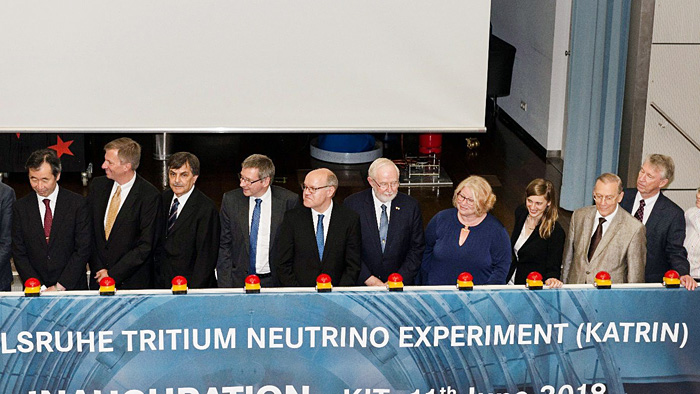Measurements in the KATRIN neutrino project started
World science, 12 July 2018
On 11 June 2018, a festive launch of measurements of the beta spectrum of tritium in the frames of the KATRIN (KArlsruhe TRItium Neutrino) was lauched in the Karlsruhe Institute of Technology (KIT) in the South-West Germany.
More than 400 people, including JINR Director V.A. Matveev, took part in the event. (It is necessary though to note that tritium was launched for the first time on 18 May, and the first short-term measurement of its beta-decay was carried out on 19 May). Thus, a long-term data collection in the KATRIN project has started, in which more than 160 physicists, engineers and technicians take part. The importance of the KATRIN project for science in Germany is evidenced by the fact that the share of the German Federal Ministry of Education in the financing of this project is about 75 percent. Only investments in the building of the KATRIN facility are about 50 million euros.
The size of the main units of the facility can be seen in the photo, which depicts transportation of the vacuum chamber of the main electronic spectrometer from the manufacturer in the KIT.
 Photo © www.katrin.kit.edu/70.php
Photo © www.katrin.kit.edu/70.php
The KATRIN experiment is currently set up and commissioned on the Campus North of the Karlsruhe Institute for Technology. The experiment is since 10 years a collaboration between national and international partners with currently more than 150 scientists, engineers, technicians and students.
KATRIN measures the neutrino mass in a model-independant way via ultrahigh precision measurements of the kinematics of electrons from beta-decay. To detect the subtle effects of a massive neutrino on the kinematics of the beta electrons requires on one hand the provision of a strong gaseous windowless Tritium source with well-known properties and precision control. On the other hand it requires a high resolution spectrometer (MAC-E filter) with large diameter (10 m) to analyze precisely the electron energies from the source. All major components are under construction or already in place and in the commissioning phase.
Like many ultra-precision experiments KATRIN pushes state-of-art technologies to its borders. Its wide spectrum of involved physics and engineering, varying for example from molecular physics to nuclear physics, or from cryogenics over vacuum engineering to material science, makes the special touch and fascination of such an experiment.
 Photo © www.katrin.kit.edu/70.php
Photo © www.katrin.kit.edu/70.php